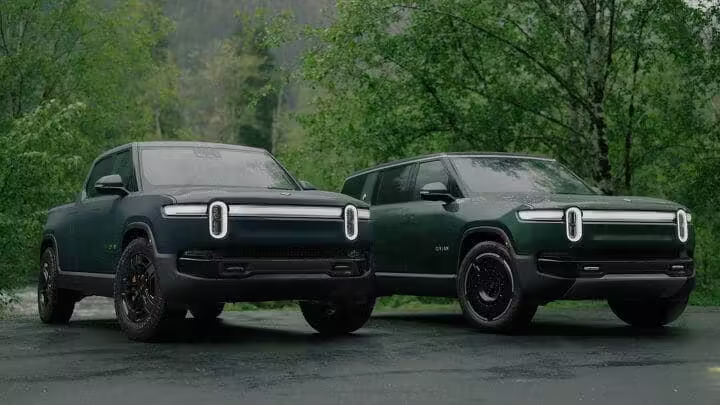The Rivian R1T and R1S have lived up to their initial hype, but they’re a little old compared to the newer models coming to market. However, Rivian recently announced updates for the pair that will help them catch up, and these changes bring some impressive specifications.
The new quad motor configuration now has 1,025 horsepower and a 0-60 mph time of under 2.5 seconds. Rivian promises a staggering 1,198 pound-feet of torque in launch mode, and a more modest dual motor variant is available for buyers who don’t want to mortgage their house to purchase an EV.
The result of Rivian’s second-generation reboot is an all-electric truck and SUV with improved ride quality, more powerful drivetrain options and other bells and whistles, including an electronically tinted sunroof and a so-called “launch mode” that can propel the new R1T quad-motor trim to 60 mph from standstill in less than 2.5 heart-pumping seconds.
But you wouldn’t know any of that by looking at the second-generation EV.
Rivian has left the exterior of the second-generation R1 line mostly unchanged — with the exception of a new lighting feature that provides a charging status bar on the front, Storm Blue paint color and wheels a decision that executives told TechCrunch was intentional.
Speaking of tech, the second-generation R1 platform now uses a new electrical architecture and compute platform that maximizes efficiency. In the camera department, the all-new in-house Rivian Autonomy Platform offers 360-degree visibility and is ten times more powerful than the systems it replaces. Equipped as standard on all R1S and R1T models, the premium version called the Rivian Autonomy Platform+ has even more capabilities.
Interestingly, the headlights and taillamps have also been updated for safety purposes.
Rivian says its autonomous cameras have the most megapixels in any car in North America — eight times more megapixels than the previous generation. According to James Philbin, Rivian’s vice president of autonomy and AI, that means the new R1T and R1S can see things three times farther away than previous models that didn’t have the new suite of sensors — and can also see better in low light or fog.
If you can’t tell from all those facts and figures, let me tell you what Rivian, at least tacitly, told me; the company is getting serious about self-driving. Behind its self-driving ambitions are a new system called the Rivian Autonomy Platform and the Rivian Autonomy Platform+, which will introduce two relatively new self-driving features: Lane Change on Command, which will be available by software update this summer, and Enhanced Highway Assist, which will eventually enable hands-free driving for a limited time and is coming “later this year,” according to Rivian.




